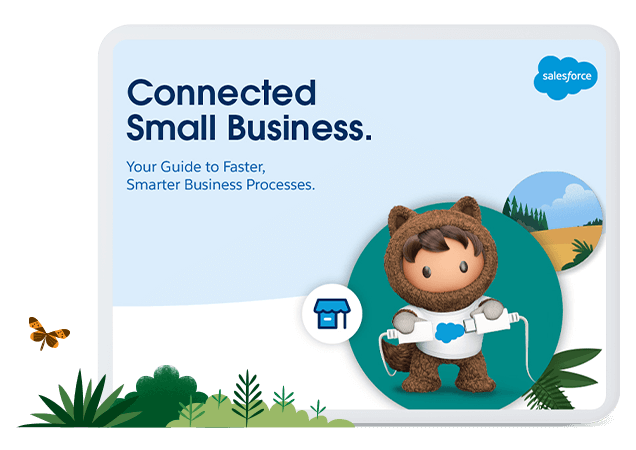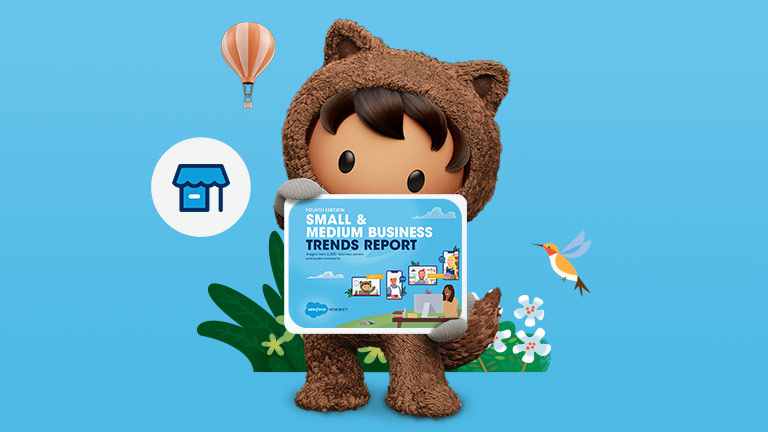Business reporting is a vital building block for small business success. After all, it’s difficult to create an effective sales plan or build a blueprint for the future if you don’t know where you’ve been – and what’s helped and hurt your business along the way.
Whether you’re looking to identify inefficient processes, drive productivity or increase sales, data-driven business reporting can help. But not all data is essential, and not all business reports are created equal.
Here’s how to create business reports that can take your organisation where it wants to go.
Move beyond annual accounts and get granular
If you’re looking for a broad overview of your organisation’s past year, then annual accounts are a great place to start. However, when it comes to making business-critical decisions quickly, you’ll need to generate more detailed information, and on a more regular basis.
The most successful business reporting offers bespoke information that’s tailored to your needs. This enables you to get a more granular view of your organisation’s KPIs (key performance indicators), and how various functions and roles are performing. For instance, if you want to gain insights into how a particular marketing campaign performed with a certain audience segment on a certain channel – that’s not something that annual accounts will show you.
Instead, you can generate weekly marketing reports, and quickly tweak campaigns based on the information presented. You can leverage real-time data to immediately respond to small business trends and avoid burning valuable resources on outdated strategies.
Deliver the right insight to the right person – just when they need it most
Data is everywhere. Today’s businesses are inundated by this by-product of work. And while data can be an SME’s most valuable resource, it needs to be made ‘smart’ to be effective. In other words, it needs to be turned into information, and that information needs to be visualised or presented in an impactful way.
The most successful business reports are centred around an organisation’s unique needs or pain points. For instance, if you’re having problems with your sales pipeline, you can use business reporting to deliver revenue intelligence. You can then use that intelligence to reduce risk and improve the accuracy of your sales forecasts.
Timeliness is especially important for data-driven decision-making. You’ll need to ensure that the right report is being generated at the right time so that you can make informed decisions when they matter most.
Financial reporting is often mandatory
Business reporting can help organisations optimise every step of the value chain, but not all business reports are created for analytical purposes.
Businesses are legally required to submit various financial reports to regulatory bodies, dependent on their country of operation. This type of regular financial reporting is also often required by stakeholders and board members.
Types of business reports
When creating business reports, you’ll need to consider who and what those reports are for. Some of the most common types of reports are –
- Informational reports. If you want to provide some purely objective background information on a subject, you might create an informational report. These reports offer facts and context, not opinions. If you write a report based on research you’ve done, it would be an explanatory report.
- Operational reports. Operational reports provide a look into the day-to-day operations of your business. These reports include things like costs, processes, expenditure of resources, etc. How your business goes about accomplishing its goals. Operational reports are highly actionable, as they offer short-term insights, often in real-time. This means they should be generated frequently and used to fuel quick business improvements.
- Analytical reports. Analytical reports can be used to dig into company performance or larger business trends. Analytical reports will not only tell a story with data but also provide insights into the how/why of that data. They will also offer suggestions for what your business should do next. For example, an analytical report might present data that shows a drop in sales from the previous quarter. It would then offer some reasons for that drop, and suggestions for improving sales productivity and revenue.
- Progress reports. A progress report does what it says on the tin: it tracks your business’s progress towards its goals. These reports are usually written to keep leadership informed of a business’s overall health. While these reports are going to be data-led, it’s also important that they be engaging, as, in many ways, this is how stakeholders will evaluate the success of your business. It’s also important that they’re honest, so make sure to address the bad and the good.
- Sales and revenue reports. This report details your business’s financial statistics over a certain time frame. This is the simplest, most straightforward report, as it easily allows you to get an overview of your profits, and compare them to other time periods.
5 tips for better business reporting
Once you know what type of reports you need, you can capture the data you require.
Here are 5 tips for gathering the right data and delivering the right insights to the right people.
- Leverage business reporting software. Business reporting software makes it easy to gather information and present it in a simple, digestible way. Business reporting software is specially designed to pull data from disparate sources, enabling users to quickly analyse information, generate insights and create actionable reports. This not only improves the quality of reports; it creates a more data-centric culture.
Centralise your data management. Free-floating, rogue data can not only obscure essential data; it can skew analytics, pose a security risk and leave your business open to regulatory violations. Centralising your data management will help you identify essential data and keep your data organised and connected. This makes it much easier to trust the business intelligence in your reports.
Create a schedule that works for your business needs. Different business needs require different reports and different schedules. Marketing campaigns may require weekly reports. Other business initiatives may take longer to evaluate, requiring only a quarterly or bi-annual report. Other functions or processes may be highly changeable, benefiting from daily or even real-time reporting.
Introduce automation. One of the best ways to level up your business reporting is to automate it. Automating your reports enables you to avoid the headaches of data wrangling, meaning that the workforce has more time to focus on other areas. It also lets you refresh your reports regularly. Automation can also reduce the chance of error.
Pay attention to presentation. When you’re telling the story of your business through data and reports, you must do it in a way that connects with your audience. This means tailoring the right report to the right readership, but it also means paying attention to how you present the reports. Using dashboards and graphs can visually tell a powerful story. Meanwhile, longer-form reports may be useful for presenting insights in a narrative context.
Ready to get started?
What are some benefits of business reporting? Better decision-making. Increased productivity. More efficient workflows. A more engaged workforce. Improved ROI on marketing activities. An optimised sales process. Superior service. But most of all, business reporting will tell the story of your organisation. Whether you want to tell that story in real time or across the years is up to you.
To see more about how to help your business reach its peak potential, download our eBook, The Connected Small Business: Your Guide to Smarter, Faster Business Processes.






